constant velocity joint CVJ dust boot
Introduction The CVJ boot, also known as the CVJ boot , is an important part of a car's drivetrain. Its job is to protect the ball bearings at the end of the driveshaft from dust, dirt, and moisture, ensuring a smooth and trouble-free power transfer to the wheels. A properly maintained CVJ boot can help prevent premature wear and extend the life of your car's driveshaft. In this article, we'll discuss the boot's function, common problems, replacement instructions, and maintenance recommendations.
What is a drive shaft end boot and why is it important? A drive shaft end boot is a flexible rubber or thermoplastic material that covers the end of the drive shaft and prevents dirt, water, and debris from entering the moving parts. It helps to:
- protect the ball bearings at the end of the drive shaft from dust and moisture
- prevent lubricant leakage and joint wear
- ensure smooth operation of the drive shaft and wheels
- save on repair costs by preventing joint breakage
Common problems and symptoms of CVJ end boot Over time, the CVJ boot can wear out, break or leak, causing the following problems:
- Cracked or torn protective rubber – if the dust cover is damaged, dirt and water can get inside the joint, which accelerates wear.
- Lubricant leakage – when the protective rubber loses its seal, the lubricant in the joint begins to leak, causing the joint to dry out and increase friction.
- Rattling and clicking sounds when turning – If the CV joint is damaged or has leaked lubricant, it can cause unusual sounds, especially when turning.
- Vibration and uneven ride – if the rubber boot does not keep the joint clean and lubricated, it can cause vehicle instability.
How to choose the right drive shaft end protection rubber?
- Car make and model – make sure that the rubber boot you choose fits exactly the dimensions of your car's drive shaft.
- material – rubber protective covers are more flexible, thermoplastic variants offer better wear resistance.
- installation method – check if the protective rubber requires special fasteners or clips.
- Weather resistance and durability – make sure the material can withstand extreme temperature changes and chemical agents.
Replacing the drive shaft end boot: step-by-step guide
- Raise the car and secure it securely – use a jack and jack stands to ensure safe access to the driveshaft.
- Remove the wheel and driveshaft mounts - it may be necessary to remove the mounts for the brake discs and other components.
- Remove the old protective rubber - cut or slide off the old dust cover, being careful not to damage the joint.
- Clean and lubricate the drive shaft end – remove old dirt and add new grease to ensure smooth operation.
- Install a new rubber boot – make sure it fits snugly and is properly secured.
- Attach the clamps and check the installation – make sure all connections are secure and the protective rubber completely covers the end of the drive shaft.
maintenance and safety requirements
- Regular visual inspection – check the condition of the protective rubber during each maintenance to prevent leaks and damage.
- Clean the area around the drive shaft as needed – if the area around the joint is dirty, it can accelerate wear.
- Replace worn or damaged dust covers in a timely manner - this will help avoid higher repair costs related to the drive shaft and CV joint.
Conclusion The drive shaft end boot is a critical component that helps ensure the long-term reliability of your vehicle's drivetrain and drive system. Regular inspection and timely replacement will help prevent major failures and ensure the longevity of your drive shaft joint. If you notice cracks, grease leaks, or clicking sounds when turning, it is recommended to replace the boot as soon as possible.
You can find more useful car maintenance and repair guides on our blog!

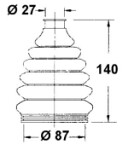
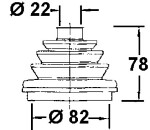

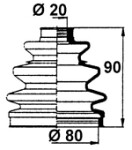
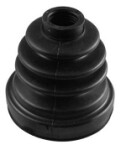


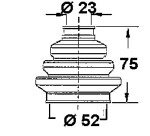
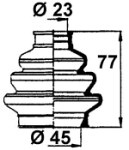





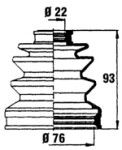





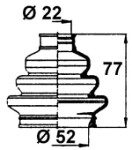









 The data shown here, especially the complete database of car spare parts, may not be copied. It is strictly prohibited to duplicate the data and database and distribute the same, and/or instruct third parties to engage in such activities, without prior consent from TecAlliance. Any use of content in a manner not expressly authorized constitutes copyright infringement and violators will be prosecuted.
The data shown here, especially the complete database of car spare parts, may not be copied. It is strictly prohibited to duplicate the data and database and distribute the same, and/or instruct third parties to engage in such activities, without prior consent from TecAlliance. Any use of content in a manner not expressly authorized constitutes copyright infringement and violators will be prosecuted.